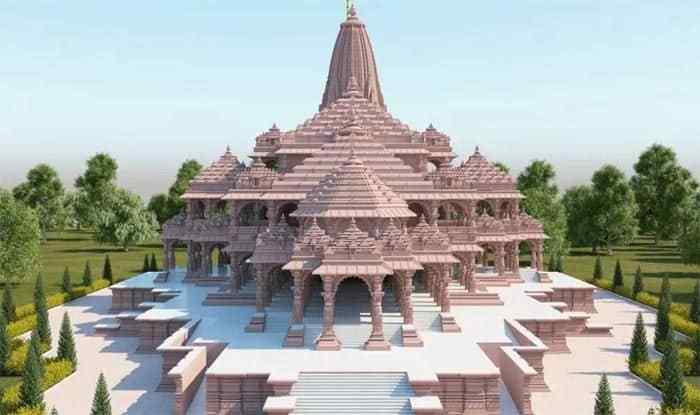Ayodhya to Become First ‘Solar City’ in UP Before Ram Temple Inauguration
Uttar Pradesh: Ayodhya is being developed as Uttar Pradesh’s first “solar city” on a war footing in preparation for the Ram temple’s consecration ceremony, which is anticipated to take place in January.
According to officials, the Uttar Pradesh New and Renewable Energy Department (UPNEDA) has taken up the challenge of creating the state’s first “solar city” in the temple town.
The “Pran Pratishtha (consecration)” event, which is anticipated to take place on January 22, would likely be attended by Prime Minister Narendra Modi and over 10,000 dignitaries from all over the nation, Ram Temple Construction Committee Chairperson Nripendra Mishra told PTI a fortnight ago.
According to officials, Chief Minister Yogi Adityanath oversees the ongoing construction in Ayodhya.
After inspecting the work to electrify the temple town with solar electricity, the state minister declared that Ayodhya is the capital of Suryavansh in May. Therefore, solar energy will generate electricity here instead of other sources.
Following the plan, a solar park will be built along the banks of the Saryu, solar-powered boats will be made available, solar streetlights will be installed, public transportation will use solar energy and solar-powered amenities like mobile charging stations will be available in public areas. The penetration of solar power for domestic use will be increased.
According to senior government officials, the project is a component of Uttar Pradesh’s ambitious Solar Energy Policy 2022. Creating 16 municipal corporations and Noida as “solar cities” is a crucial concept component.
UPNEDA Director Anupam Shukla says, “The idea is to develop Ayodhya as the prototype for the solar city project and use the learnings in implementing solar policies in other proposed cities.”
The first phase of the solar city project aims to cover amenities like streetlights, solar panels on government buildings, e-rickshaws with charging stations, solar trees, and solar-powered water purifier kiosks. The project is a five-year plan (2023–2028).
“We are confident that most of the ongoing projects in Ayodhya will be completed by January,” stated Shukla.
The project’s main feature is constructing a 40 MW solar plant, which will be built by NTPC Green, along the banks of the Saryu. By January, 10 MW of the project should be operational.
Officials from UPNEDA verified that the project’s land has been finalized and that work has already begun.
In addition, 117 government buildings will have solar panels installed on their roofs, totaling 2.5 MW. Among these are solar panels with capacities of 250 kW at RML Awadh University, 155 kW at Agriculture University, 100 kW at the district court, 58 kW at the Ram Katha Museum, and 50 kW at various government secondary schools.
The authorities have also set a goal of installing 6 MW of solar power on 125 residential and commercial structures.
One hundred thirty-four solar smart streetlights, especially for Ayodhya by Philips, have already been installed by UPNEDA. Soon, the remaining 276 will be set up. According to the officials, the battery is installed inside the pole with the solar panel on top in these lamps’ modular design.
The well-known Ram Path, a 12.9-kilometer, six-lane road leading to the temple from Sahadatganj on the Lucknow-Ayodhya National Highway and up to the Lata Mangeshkar Chowk in the Nayaghat region, will have solar lamps placed along it. In addition to this, the city now has 800 solar streetlights.
At various locations, 40 solar trees with a 1 kW capacity and 18 with a 2.5 kW capacity are being installed. These solar trees will have LED lighting attached to solar panels in branch-like structures. According to the officials, the branch-like panels can be erected above tiny drinking water kiosks or benches and offer shade.
The UPNEDA is constructing two solar-powered EV charging stations to promote the use of electric vehicles. For farmers to keep their goods, a six-metric-ton solar cold storage is erected at the mandi.
One hundred fifty solar high-mast lights at prominent road crossings, five e-rickshaws specifically designed for devotees with disabilities, ten solar-powered water kiosks — four of which have already been installed — and two solar-powered boats with a capacity to hold 30 people are additional amenities that will be available by January. The UP State Tourism Development Corporation will run the boats that pilgrims on the Saryu will utilize, according to Shukla.
Any city that uses renewable energy to meet 10% of its electricity needs is considered a solar city.
According to UPNEDA authorities, the initial goal for Ayodhya would be accomplished by January.



Comments are closed.